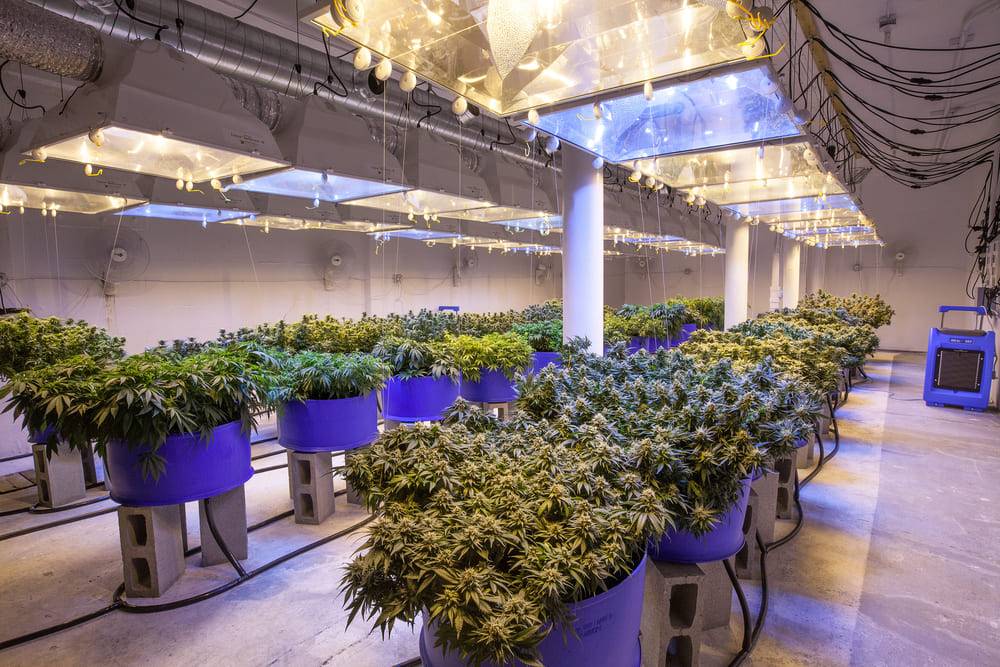
Design, installation, and proper use of an odor mitigation system for cannabis grow facilities is critical to the performance of the system. Even with the best chemistry and top-quality equipment, if these three factors are not properly addressed, the system will not perform as expected. The following should be considered for an effective system:
What is the available power source?
Although the system can be designed for single phase electric power (115V or 230V), the size of the system will be limited. 3 Phase power (208V, 230V, or 460V) is required for larger systems and will provide a more efficient operation.
In either case, it is important that the voltage and phase for the power source is identified and a properly sized dedicated circuit is provided.
What is the required water source needed to supply the equipment?
The amount of water required to maintain the effectiveness of the odor control system will depend on the overall size of the system (the number and size of exhaust fans and/or length of perimeter lines). It is recommended that the water supply be a dedicated source at least 2 times the total amount of water needed for the entire system with at least 60 psi.
It is also important that a municipal water source is used. Water from a well or holding tank will introduce debris and contaminants that have to be addressed to avoid problems with the system’s operation.
Where will the equipment be installed?
Ideally, the pump and odor mitigating solution should be located in a separate climate-controlled room somewhere in the facility. Since the actual growing environment will typically experience humidity levels above 50%, it is best if they are not located within the grow rooms. The pump and odor mitigating solution should never be placed outside to avoid problems with varying climate conditions including freezing, excessive heat, or rain/snow conditions. Only the mist rings should be mounted externally.
Due to the recommendations for the placement of the equipment, it is necessary that the electrical power and dedicated water source are available within the climate controlled electrical equipment room.
How many exhaust fans are included in the facility?
Because the system is designed to only treat the exhausted air from the various rooms within a given facility, it is important to identify the total number of exhaust fans and the size and CFM of each. Knowing this will allow the system to be properly sized for each zone within the facility.
It is also important to know how the exhaust fans will be staged/sequenced. Will multiple fans be tied together within the greenhouse control system or will each fan be able to be turned ON/OFF independent of all other fans? This will determine how many zones are required for the odor mitigation equipment.
How will the system be controlled?
There are a number of different manufacturers of facility maintenance equipment. The Fogco odor mitigation systems are designed to adapt to any commercially available environmental control system. Essentially, the only external controls needed for the odor mitigation system will be a dedicated start signal for each zone. The most common is a 2VAC signal but it can be 24VDC, 120V, etc.
What steps are required to properly install the system?
There are many different variables that will impact a proper installation. To ensure an ideal installation, it is recommended that a Fogco representative be on site during the installation to properly address the different conditions that exist at different facilities.
Although some conditions can be anticipated and specific installation instructions can be provided, on-site supervision is preferred to ensure an ideal installation thereby ensuring optimum system performance.
How is the odor mitigation system used?
A complete and detailed User’s Manual is provided with each system. It explains all the operation and maintenance requirements for the system.
Assuming the system design and installation are properly completed, the system operation is completely automated and does not necessarily require any special attention. When the system is built, it is designed to account for all possible operational requirements. As long as the proper start signals are provided, the odor mitigation system will provide years or reliable use with little system maintenance.

